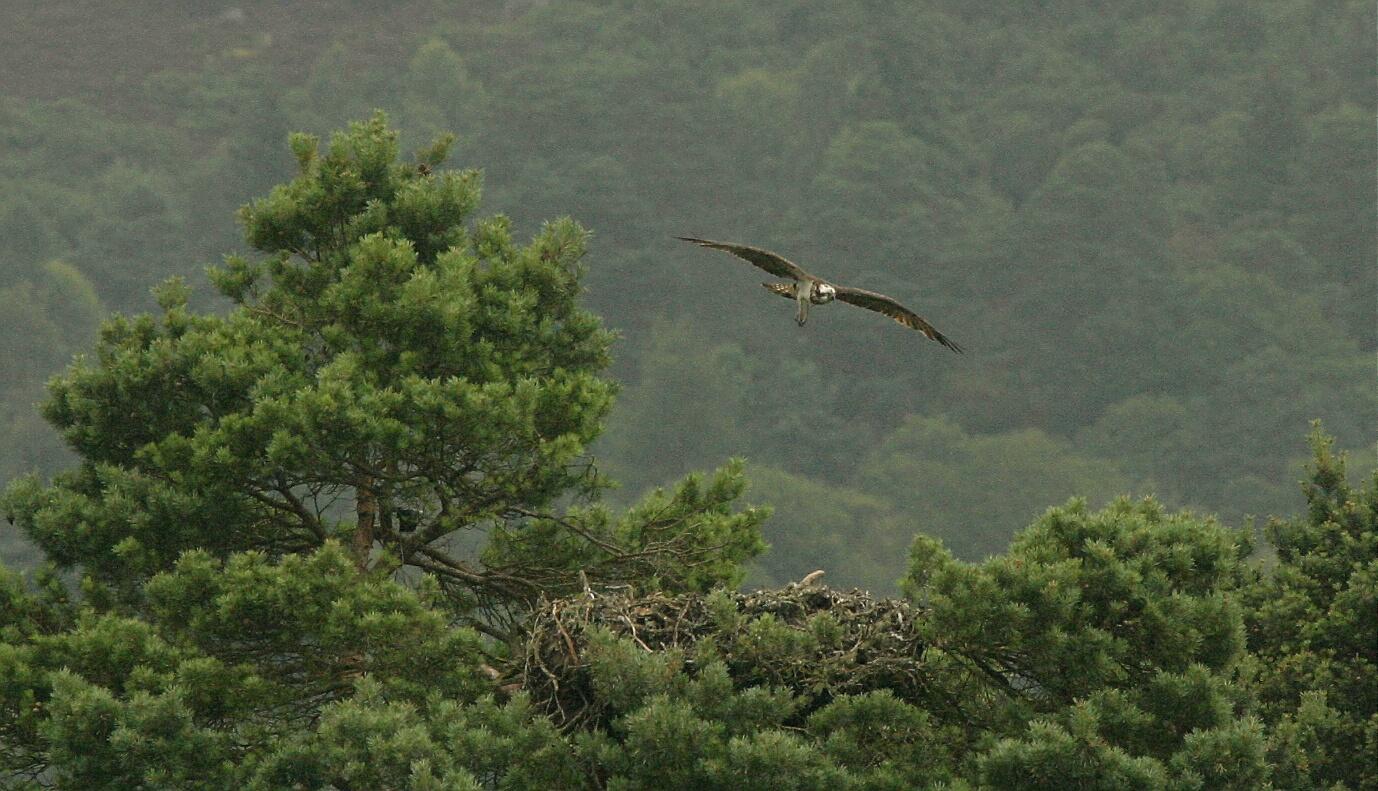A 24-year-old osprey which made a miraculous recovery from a recent illness has exceeded the expectations of experts by surviving this year”s breeding season to see her latest chicks successfully make their first flight from their Perthshire nest.
Taking to the skies on Sunday at 9.09am, the most recent chick to fledge from the osprey nest at the Scottish Wildlife Trust’s Loch of the Lowes Wildlife Reserve is the 47th chick of the famed bird.
With ospreys living an average of eight years and producing 20 chicks during that time, experts are calling the Loch of the Lowes mum “a real record-breaker.”
During a bout of ill-health last month thousands of wildlife enthusiasts across the globe watched via webcam as the bird, known affectionately as the Lady of the Loch, became unable to open her eyes or stand over her chicks and stopped eating.
It was feared that she only had days to live and her death would threaten the survival of the chicks-but onlookers watched in disbelief as the hardy bird made an unexpected recovery.
Now experts are worried that the bird’s imminent migration to West Africa means this will be the last the UK sees of this now famous osprey.
Peter Ferns is Loch of the Lowes visitor centre manager and he said, “We are overjoyed that our female breeding osprey has once again been successful in producing and raising chicks which have fledged the nest.
“This is the 20th consecutive year we have watched over this bird at Loch of the Lowes and it’s certainly been one of the most dramatic. We watched with absolute delight as the eldest chick soared for the first time.Emotional”It was an emotional moment for all the staff and our dedicated bloggers who watch with us online at www.swt.org.uk.
“A few weeks ago we didn’t think we would see this day after the female became so ill.
“Since her remarkable recovery she has amazed us all again with her tenacity and dedication to her chicks.
“We hope the younger chick will follow its elder sibling’s lead and take to the skies in the next few days.”
The chicks will now spend the next few weeks building up their wing strength and practising their fishing and feeding skills before setting off on the 3000-mile migration to West Africa towards the end of August.
They will spend the first three to five years of their life there before becoming sexually mature and returning to the UK to breed.
The adult female is usually the first to leave the nest at the beginning of August, while the male stays on longer to continue to bring fish to the nest for the newly-fledged chicks.UnsureBut this year staff of the Scottish Wildlife Trust are unsure about what will happen next.
The trust’s Perthshire ranger Emma Rawling said, “Given her recent illness, our female may be too weak to migrate and might therefore stay a few weeks later than usual, or possibly will not migrate at all.
“Our hope is that she is strong enough and will start her migration some time in August.
“We’ll be especially sad to see her go as the odds that she will return next spring are low, but we won’t be giving up on her.
“She has surprised us once and just might be capable of doing it again.”
The chicks’ first take-off and landing were caught live on the Loch of the Lowes visitor centre’s high definition cameras and witnessed by visitors on the large HD screen-as well as the thousands worldwide watching the live webcam.
